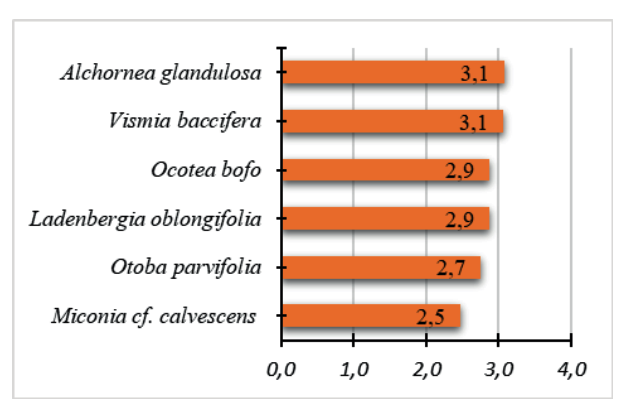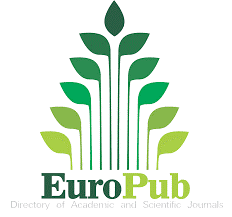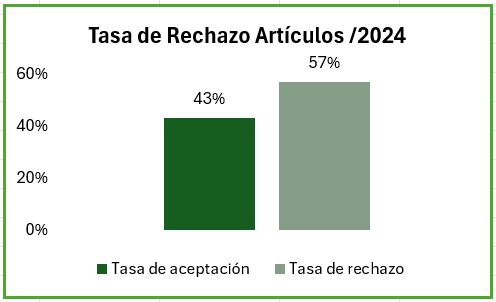Passive restoration as a strategy for the recovery of floristic composition and forest structure in the premontane forests of southern Ecuador
DOI:
https://doi.org/10.54753/blc.v15i1.2340Keywords:
ecological restoration, pasive restoration, secondary succesion, promenotane forestAbstract
Tropical forests, which cover 45% of the global forest area, harbor high biodiversity and provide essential ecosystem services at both local and global scales. In Ecuador, the forests of the Amazon region possess significant floristic diversity and are critical for biodiversity conservation, as well as for climate and hydrological regulation. However, these ecosystems are threatened by deforestation and degradation due to human activities such as agriculture, livestock farming, and logging. To mitigate these impacts, ecological restoration strategies, both active and passive, have been implemented globally. These strategies aim to restore biodiversity, increase forest cover, and improve ecosystem structure and composition while conserving ecosystem services. In this study, four 2 500 m² plots were established in passive restoration areas, where all trees with a DBH greater than 5 cm were measured. The evaluated passive restoration areas showed significant recovery of floristic composition and structure for an early successional stage, potentially reaching medium diversity levels and recovering at least 34% of the basal area compared to old-growth forests. Passive restoration promotes the emergence of fast-growing species and the recruitment of seed dispersers, making it an efficient and cost-effective option for ecosystem restoration. At the landscape level, passive restoration is crucial for reconnecting forest fragments and promoting biodiversity, contributing to the sustainability and resilience of ecosystems in landscapes altered by human activities."References
Aguilar, Z., Flores, P., Lara, S., & Tapuy, M. (2020). Los Bosques del Ecuador. https://wedocs.unep.org/bitstream/handle/20.500.11822/32473/WF20BSP.pdf?sequence=6&isAllowed=y
Aguirre, N. (2011, December 10). Restauración Ecológica. https://nikolayaguirre.com/2012/01/27/restauracion-ecologica/
Aguirre, Z. (2013). Métodos para medir la biodiversidad (Primera Ed). Universidad Nacional de Loja.
Armendariz, I., & Caamal, A. (2002). La sucesión secundaria en los ecosistemas y agroecosistemastropicales – el henequén (agave fourcroydes) en el contexto de ladiversificación. Tropical and Subtropical Agroecosystems. http://www.redalyc.org/articulo.oa?id=93911238005
Balvanera, P. (2012). Los servicios ecosistémicos que ofrecen los bosques tropicales. Ecosistemas, 21(1–2), 136–147.
Barrera, J. (2014). Los disturbios como causa de degradación de los ecosistemas. moz-extension://d9359200-f10d-416d-9a53-7e6f6e5923e3/enhanced-reader.html?openApp&pdf=http%3A%2F%2Felti.fesprojects.net%2F2014%2520Monitoring_Pereira%2Fj._barrera_degradacion.pdf
Calva, J., Ortiz, N., Calapucha, J., Chango, G., & Pallo, C. (2020). LOS BOSQUES DE ECUADOR.
Chazdon, R. (2014). Second growth: the promise of tropical forest regeneration in an age of deforestation. University of Chicago Press.
Chazdon, R. (2019). Towards more effective integration of tropical forest restoration and conservation. Biotropica, 51(4), 463–472.
Eguiguren, P., Fischer, R., & Günter, S. (2019). Degradation of ecosystem services and deforestation in landscapes with and without incentive-based forest conservation in the Ecuadorian Amazon. Forests, 10(5). https://doi.org/10.3390/f10050442
FAO. (2011). The State of Forests in the Amazon Basin, Congo Basin, and Southeast Asia. A report prepared for the summit of the Three Rainforest Basins.
FAO. (2020). Global Forest Resources Assessment 2020. Global Forest Resources Assessment 2020. https://doi.org/10.4060/ca8753en
Finegan, B., & Delgado, D. (2000). Structural and floristic heterogeneity in a 30‐year‐old Costa Rican rain forest restored on pasture through natural secondary succession. Restoration Ecology, 8(4), 380–393.
Gann, G., Mcdonald, T., Walder, B., Aronson, J., Nelson, C., Jonson, J., Hallett, J., Eisenberg, C., Guariguata, M., Liu, J., Hua, F., Echeverría, C., Gonzales, E., Shaw, N., Decleer, K., & Dixon, K. W. (2019). Principios y estándares internacionales para l a práctica de la restauración ecológica.
Guariguata, M. R., & Kattan, G. H. (2002). Ecología y conservación de bosques neotropicales.
Guillen, G. (2011). “Turno biológico de corta en Juglans neotropica Diels, a partir del analisis de anillos de crecimiento en Selva Central del Perú”.
Haddad, N., Brudvig, L., Clobert, J., Davies, K., Gonzalez, A., Holt, R., Lovejoy, T., Sexton, J., Austin, M., Collins, C., Cook, W., Damschen, E., Ewers, R., Foster, B., Jenkins, C., King, A., Laurance, W., Levey, D., Margules, C., … Townshend, J. (2015). Habitat fragmentation and its lasting impact on Earth’s ecosystems. Science Advances, 1(2), e1500052–e1500052. https://doi.org/10.1126/sciadv.1500052
Jaramillo, L. (2014). Evaluación comparativa de tratamientos silviculturales en el crecimiento de especies forestales y características del suelo en la restauración ecológica de la cubierta forestal de la cuenca del rio jamboé, sector numbami, zamora chinchipe. universidad nacional de loja.
Keenan, R., Reams, G., Achard, F., De-Freitas, J., Grainger, A., & Lindquist, E. (2015). Dynamics of global forest area: Results from the FAO Global Forest Resources Assessment 2015. Forest Ecology and Management, 352, 9–20. https://doi.org/10.1016/j.foreco.2015.06.014
MAE. (2017). Deforestación del Ecuador Continental periodo 2014 - 2016.
Ministerio del Ambiente de Ecuador. (2019). Plan Nacional de Restauración Forestal 2019-2030.
Ministerio del Ambiente del Ecuador. (2013). Sistema de Clasificación de los Ecosistemas del Ecuador Continental.
Muñoz, L. (2020). Técnicas de Restauración Ecológica.
Muñoz Mazón, M., Klanderud, K., Finegan, B., Veintimilla, D., Bermeo, D., Murrieta, E., Delgado, D., & Sheil, D. (2019). Disturbance and the elevation ranges of woody plant species in the mountains of Costa Rica. Ecology and Evolution, 9(24), 14330–14340.
Murcia, C., & Guariguata, M. (2014). La Restauración Ecológica en Colombia: Tendencias, Necesidades y Oportunidades. Documentos Ocasionales 107. https://doi.org/10.17528/CIFOR/004519
Riitters, K., Wickham, J., O’Neill, R., Jones, B., Smith, E., Coulston, J., Wade, T., & Smith, J. (2002). Fragmentation of Continental United States Forests. Ecosystems, 5, 815 – 822.
Ríos, O. V. (2011). Restauración ecológica: Biodiversidad y conservación. Acta Biologica Colombiana, 16(2), 221–246.
Ron, S. (2020). Regiones naturales Ecuador. In BIOWEB.Pontificia Universidad Católica del Ecuador. https://bioweb.bio/faunaweb/amphibiaweb/RegionesNaturales
Sánchez, M. (2020). Diversidad de la regeneración natural e incremento dasométrico de especies forestales en áreas de restauración ecológica de la reserva numbami en la provincia zamora chinchipe. universidad nacional de loja.
SER. (2004). The SER International Primer on Ecological Restoration. British Journal of Pharmacology, 55(2), 282P-283P. http://www.ncbi.nlm.nih.gov/pubmed/116%0Ahttp://www.pubmedcentral.nih.gov/articlerender.fcgi?artid=PMC1666813
Sierra, A. (2018). Evaluación de estrategias de restauración ecológica en el Corredor Biológico Rincón Cacao, Costa Rica [Centro Agronómico Tropical De Investigación Y Enseñanza]. https://repositorio.catie.ac.cr/handle/11554/8912
Sierra, R., Calva, O., & Guevara, A. (2021a). La Deforestación en el Ecuador, 1990 – 2018: Factores, Promotores y Tendencias Reciente. s. Ministerio de Ambiente y Agua del Ecuador, Ministerio de Agricultura del Ecuador, en el marco de la implementación del Programa Integral Amazónico de Conservación de Bosques y Producción Sostenible.
Sierra, R., Calva, O., & Guevara, A. (2021b). La Deforestación en el Ecuador, 1990-2018. Factores Promotores y Tendencias Recientes. PNUD y Ministerio de Ambiente y Agua Del Ecuador. Quito, Ecuador.
The Nature Conservancy. (2022). Restauración ecológica. https://www.nature.org/es-us/sobre-tnc/donde-trabajamos/tnc-en-latinoamerica/brasil/historias-en-brasil/restauracion-ecologica/
Thornton, H. (2020). Ventajas de la restauración de los ecosistemas y la recuperación de especies para las personas y el planeta | Naciones Unidas. Nature, 586(7831), 724–729. https://doi.org/10.1038/S41586-020-2784-9
Torres, B., Fischer, R., Vargas, J., & Günter, S. (2021). Deforestación en paisajes forestales tropicales del Ecuador: bases científicas para perspectivas políticas (Vol. 15). Serie de publicaciones misceláneas del INABIO. moz-extension://d9359200-f10d-416d-9a53-7e6f6e5923e3/enhanced-reader.html?openApp&pdf=http%3A%2F%2Finabio.biodiversidad.gob.ec%2Fwp-content%2Fuploads%2F2021%2F01%2FLAFORET_WEB.pdf
Viapiana, J., Cielo-Filho, R., & Câmara, C. D. (2019). Evaluation and characterization of passive restoration of an Atlantic forest tree community with focus on the understory. Tropical Ecology, 60(1), 140–149. https://doi.org/10.1007/s42965-019-00017-0
Wasserstrom, R., & Southgate, D. (2013). Deforestation, Agrarian Reform and Oil Development in Ecuador, 1964-1994. Natural Resources, 04(01), 31–44. https://doi.org/10.4236/nr.2013.41004

Published
How to Cite
Issue
Section
License
Copyright (c) 2025 Bosques Latitud Cero

This work is licensed under a Creative Commons Attribution-NonCommercial-ShareAlike 4.0 International License.
This work is published under the Creative Commons Attribution-NonCommercial-ShareAlike 4.0 International (CC BY-NC-SA 4.0) license. This means that users may copy, distribute, and adapt the content, provided that proper credit is given to the authors and the journal. Commercial use of the material is not permitted. Additionally, any derivative work must be distributed under the same license. This license ensures open access to knowledge, promoting the dissemination and reuse of published works for non-commercial purposes, respecting authorship, and ensuring the free circulation of content under fair terms.




























